I’m trying to create a timing light. Due to the lockdown I can’t get any other parts. I have a neon bulb which does light up when I hold it next to the spark plug lead but it is too dim to be useful. Is there any way I could somehow use this as a switch so I could light up another LED?
-
Do you have either of the neon leads connected to ground? Can you post a photo of how you are using it? You can [Edit] your post to add the details. – Transistor Apr 09 '20 at 21:42
-
Well I just held the neon bulbs next to the spark plug lead. I was touching the contact points. – Junaid Apr 09 '20 at 21:48
-
@Junaid I'd really like to see an image; I can't imagine how that looks, and what kind of neon bulb we're talking about, how close "next to" is... photo please. – Marcus Müller Apr 09 '20 at 21:49
-
1@Junaid: That tells me almost nothing. You could be holding the glass, holding one lead, both leads. "I was touching the contact points ..." with what? Your other hand, the neon indicator? One lead, both leads? We can't see what you are doing. – Transistor Apr 09 '20 at 21:52
3 Answers
You can try this. 27V is 3x 9V battery in series.
If the LED stays on after the neon triggers you may have to play with the voltage or R1 value.

simulate this circuit – Schematic created using CircuitLab
The gas in the neon lamp is ionized by the high voltage which causes current to flow, a bit like an old-school thyratron or xenon flash tube.
- 376,485
- 21
- 320
- 842
-
-
Isn’t 27V a bit too high for the LEDs? I’ve got 12V LEDs but they also run on 9V fine. – Junaid Apr 10 '20 at 09:58
-
The 27V is a guess at a multiple of 9V that is enough to push sufficient current through the ionized gas in the neon to produce a visible flash on a good super-bright LED, and well below the strike voltage, but not so much current it fails to extinguish. It’s a guess, this circuit may not work, but if you have the parts around it’s easy to try, – Spehro Pefhany Apr 10 '20 at 12:07
-
-
-
Yeah, the neon light doesn’t light up very bright but it’s bright enough to see it flicker – Junaid Apr 10 '20 at 12:33
-
Curious. Well it may not work at all. Assuming the LED goes on if the neon is shorted, the only suggestion I have is to try more voltage. – Spehro Pefhany Apr 10 '20 at 12:45
-
Let us [continue this discussion in chat](https://chat.stackexchange.com/rooms/106552/discussion-between-junaid-and-spehro-pefhany). – Junaid Apr 10 '20 at 12:50
Add in LEDs in series, usig two parallel LEDs(back-to-back) so one LED conducts and the other protect the active LED from Vr >-5V
Don't overdo the brightness and put a tube over the end so the wirebond doesn't fuse open but is visible in high ambient light. I presume the neon tube has a current limiter.
- 1
- 3
- 54
- 182
You are seeing capacitive coupling from the 25,000 volts in the spark plug wire, to the neon bulb lead, thru the neon gas and out to your body that is leaning against the car fender.
You don't need the neon bulb. Just tape one lead of a 1MegOhm resistor to the plug wire.
Then run the other resistor lead over to clamp diodes, to clamp at gnd and +3.3v.
Use that clamped voltage pulse to toggle your switch behavior.
how much current will you get?
assume the resistor lead is 1mm by 3cm, spaced 3mm from the spark plug wire, with plug wire relative dielectric constant of 5.
The capacitance is
C = Eo * Er * area/distance
C = 5 * 9e-12 farad/meter * area/distance
(area/distance = (1mm * 3cm)/3mm == 0.01er
C = 45e-12 farad.meter * 0.01 meter = 45e-14 farad == 0.5e-12 farad
C = 0.5 picofarad
Assume the spark voltage rises 25,000 volts in 25 microseconds, This is 1 billion volts per second.
What is the current? ignoring the 1Megohm,
I = C * dV/dT = 0.5e-12 * 1e+9 = 0.5e-3 = 500 microamps.
which imposes 500 volts across the 1Megohm. So use 1/2 watt, for the longer body
Now you place 10K ohm at the clamped node, and enjoy your 5 volt trigger pulse.
- 33,703
- 2
- 18
- 46
-
Unfortunately I can’t try this because the only resisters I have are 1kOhm. Due to the lockdown I can’t get any other for the next few weeks. – Junaid Apr 10 '20 at 16:01